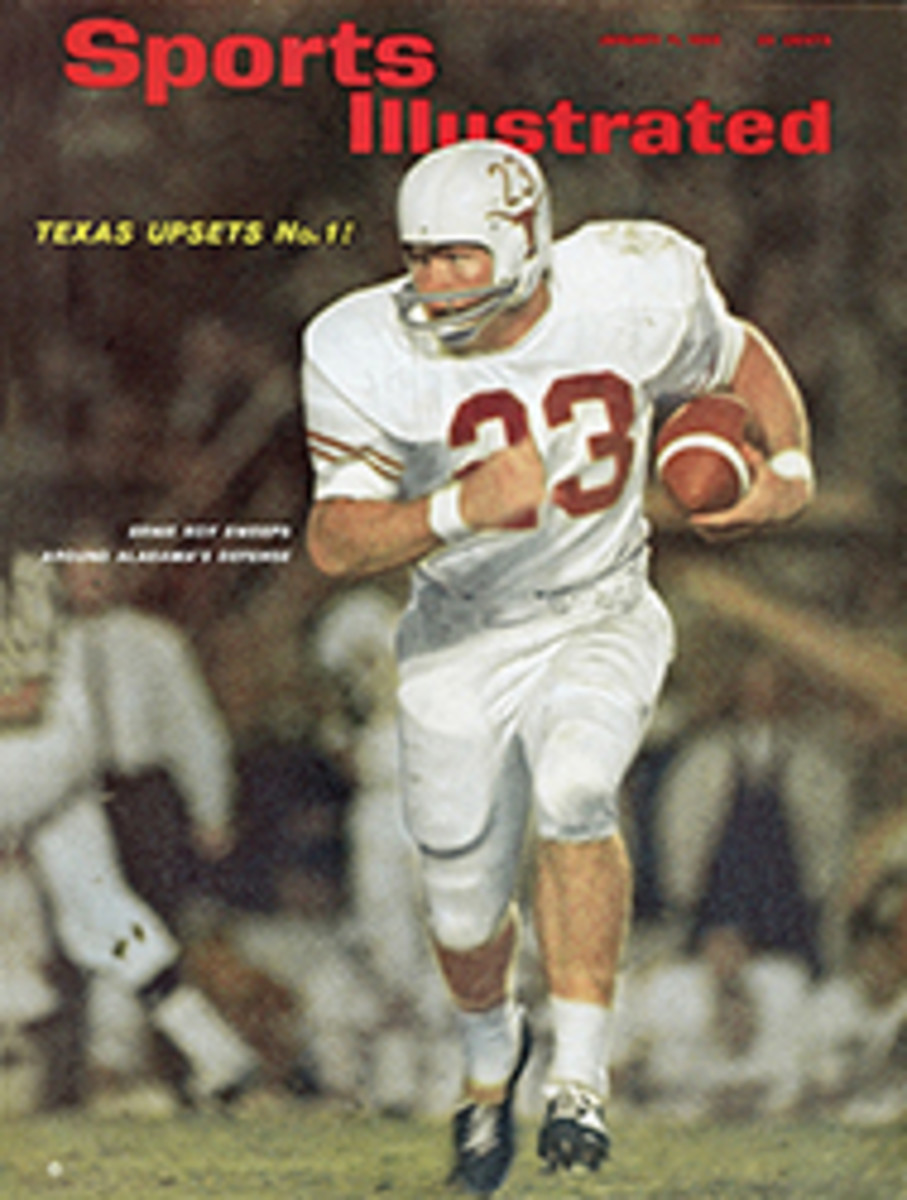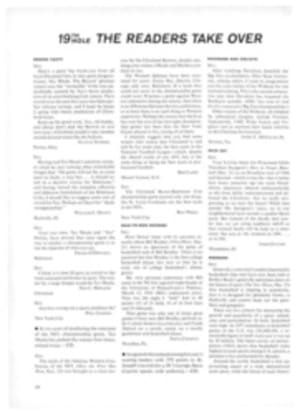
CHILLY HOT-RODDING ON THE ICE
One sail on an iceboat, say those who have tried it, and you are hooked for life. This means, in all likelihood, that Joe Norton, the 16-year-old shown opposite, will spend the rest of his years skidding across frozen lakes at speeds of 50 to 100 mph or more. Iceboating is probably as old as sailboating, but the advent of Dacron sails and space-age metals has given it a new spurt. Today there are more than 3,000 iceboats waiting only for a hard freeze to screech out into lung-searing cold on lakes from New Jersey to Wisconsin. Iceboat classes range from huge two-man A boats, which are 56 feet long, 32 feet across and spread 650 square feet of sail, to the smaller catboat-rigged DN60s, such as that sailed by Joe Norton. The enthusiastic iceboaters who sail them (following pages) number among them many topflight waterborne sailormen like Olympian Harry (Bud) Melges and at least one topflight sailorwoman.
LADY OF THE FROZEN LAKES
Mrs. Robert Pegel of Chicago and Williams Bay, Wis. looks and talks like a comfortable Midwest housewife, and one might reasonably guess that her favorite sport is baking apple strudel. But if Jane Pegel ever finds time to bake a strudel it will be in the dark of night when there's no wind on the water and no ice on the lake, for at any other time, summer or winter, Jane is sure to be out sailing. In summers she sails an M-16 Scow and has twice (in 1957 and 1964) proved herself the best sailorwoman in North America. In winters she takes the helm of her own DN60 class iceboat, Calamity Jane, and outsails most of the men on Wisconsin's frozen lakes.
Jane, whose husband makes sails for both scows and iceboats, is one of the very few women with sufficient nerve and skill to sail an iceboat, but her love for the sport is easily explained. She grew up on the edge of Williams Bay practically slap on the spot where the first Class E Skeeter was built in 1933. The Skeeter is the fastest and hairiest of all iceboats. It is limited only in sail area—75 square feet—and, beyond that, it can take any form the designer chooses. Sailing a Skeeter requires a cool head, an iron arm and steely nerves, and this is the boat that Jane Pegel learned on. Even small iceboats move along at speeds well above 50 miles per hour, and a Skeeter will go 80 to 100 or even more. In iceboat sailing the blink of an eye at the wrong time can lead to a shattering pileup and terrible injury. "But in all these years of racing," Jane said recently, "I've never had a bad spill."
In 1957 Jane forsook the big Skeeters for a smaller class—the 12-foot DNs sponsored by the Detroit News—and won her first class championship in 1960. She won again in 1963. Last year she returned briefly to an old love and spun off a few races in a Skeeter. "Oh man," said Jane, "I forgot how fast they are." To prove she could sail a Skeeter with any man, Jane, who wraps her legs around the fuselage and rides her boat downwind like a bucking bronco, took a second and third, which is something like Betsy Rawls beating Jack Nicklaus and Tony Lema and finishing just behind Arnie Palmer.
Boatbuilder and Olympic Sailor (Flying Dutchmen) Buddy Melges, himself an avid iceboater, has followed Jane's sailing fortunes for years and attributes her success largely to her knowledge of iceboat tuning. In fast-moving iceboats subtle differences in rig can make enormous differences in speed, and Jane is an expert at flopping her rig to get a properly set sail and aligning her runners to draw the most out of them.
As if sailing were not enough, Jane takes on a big burden of administration. She is a director of the National Ice Boat Authority, secretary of the International Skeeter Association, past commodore of the DN class and a member of the Adams Cup Committee. Like all iceboaters, Jane stays close to home throughout the winter, in case a lake reachable by car and trailer has a surface hard and smooth enough for good racing. This may be anywhere from upper Wisconsin to upper Michigan. There is an advisory telephone service in Chicago that keeps the iceboat sailors informed. As early as Wednesday, Jane calls this number to find out if there will be racing on Friday, Saturday or Sunday. A Thursday deadline is set for Saturday or Sunday racing. Often the competitors get to the chosen spot only to find the weather has closed in, canceling the racing. "Sometimes you go." grins Jane, "sometimes you don't." Weekend after weekend, from December 15 to March 15, this uncertainty lasts, and no other plans can be made since a fixed number of races must be sailed in that period. When there are holes in the ice or too much snow or wind Jane sometimes abandons sailing for skiing, but her heart is never really in such humdrum sport. "One day of iceboating," says Jane Pegel, "and you're ready to burn your skis."
PHOTO
NEIL LEIFER
Leading two rivals, Bill Perrigo whips across Green Lake at a mile a minute.
PHOTO
NEIL LEIFER
On Lake Geneva, George Happ fights a sub-zero wind with goggles and hood.
PHOTO
NEIL LEIFER
As night and numbing cold close in, skippers turn their boats homeward.
PHOTO
NEIL LEIFER
PHOTO

